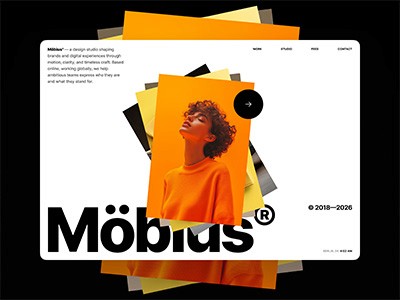Why Collaboration Leads to Better Creative Work
Why Collaboration Leads to Better Creative Work
Why Collaboration Leads to Better Creative Work
Creative work thrives on communication. The best results come when clients and designers work as partners — not in silos.
Creative work thrives on communication. The best results come when clients and designers work as partners — not in silos.
Creative work thrives on communication. The best results come when clients and designers work as partners — not in silos.
Nina Moretti
/
April 8, 2026
Nina Moretti
/
April 8, 2026
Nina Moretti
/
April 8, 2026
Why this matters
In a world where attention is short and competition is high, the difference between noise and impact often comes down to intention. Design, on its own, isn’t enough. It needs a reason to exist — a strategy, a story, a goal.
At Firma, we see every project as a chance to create something that’s not just beautiful, but built to perform. Whether it’s a brand refresh, a digital platform, or a complete campaign rollout, we start by understanding what truly needs to happen — and then build from there.
Why this matters
In a world where attention is short and competition is high, the difference between noise and impact often comes down to intention. Design, on its own, isn’t enough. It needs a reason to exist — a strategy, a story, a goal.
At Firma, we see every project as a chance to create something that’s not just beautiful, but built to perform. Whether it’s a brand refresh, a digital platform, or a complete campaign rollout, we start by understanding what truly needs to happen — and then build from there.
Why this matters
In a world where attention is short and competition is high, the difference between noise and impact often comes down to intention. Design, on its own, isn’t enough. It needs a reason to exist — a strategy, a story, a goal.
At Firma, we see every project as a chance to create something that’s not just beautiful, but built to perform. Whether it’s a brand refresh, a digital platform, or a complete campaign rollout, we start by understanding what truly needs to happen — and then build from there.
Strategy over guesswork
Too often, teams jump straight into execution without asking the bigger questions: Who are we designing for? What does success look like? What are we really trying to say?
Taking time to define the problem and align on purpose saves time (and sanity) later. Strategy isn’t the slow part of the process — it’s what makes the rest of the work go faster, with fewer wrong turns.
Design systems, identities, websites — they all work better when there’s a clear direction behind them. With a solid strategy in place, we’re not just picking fonts and colors — we’re making decisions with purpose, based on insight.
Strategy over guesswork
Too often, teams jump straight into execution without asking the bigger questions: Who are we designing for? What does success look like? What are we really trying to say?
Taking time to define the problem and align on purpose saves time (and sanity) later. Strategy isn’t the slow part of the process — it’s what makes the rest of the work go faster, with fewer wrong turns.
Design systems, identities, websites — they all work better when there’s a clear direction behind them. With a solid strategy in place, we’re not just picking fonts and colors — we’re making decisions with purpose, based on insight.
Strategy over guesswork
Too often, teams jump straight into execution without asking the bigger questions: Who are we designing for? What does success look like? What are we really trying to say?
Taking time to define the problem and align on purpose saves time (and sanity) later. Strategy isn’t the slow part of the process — it’s what makes the rest of the work go faster, with fewer wrong turns.
Design systems, identities, websites — they all work better when there’s a clear direction behind them. With a solid strategy in place, we’re not just picking fonts and colors — we’re making decisions with purpose, based on insight.
Three principles we always come back to
Form follows clarity. Good design starts with understanding. When the thinking is sharp, the creative work feels effortless — and makes a lasting impression.
Consistency builds trust. Across platforms, teams, and timelines — consistency is what turns good branding into great experiences.
Craft is never optional. We obsess over details because users notice them, even if they don’t realize it. Pixel-perfect isn’t just a phrase — it’s a mindset.
Three principles we always come back to
Form follows clarity. Good design starts with understanding. When the thinking is sharp, the creative work feels effortless — and makes a lasting impression.
Consistency builds trust. Across platforms, teams, and timelines — consistency is what turns good branding into great experiences.
Craft is never optional. We obsess over details because users notice them, even if they don’t realize it. Pixel-perfect isn’t just a phrase — it’s a mindset.
Three principles we always come back to
Form follows clarity. Good design starts with understanding. When the thinking is sharp, the creative work feels effortless — and makes a lasting impression.
Consistency builds trust. Across platforms, teams, and timelines — consistency is what turns good branding into great experiences.
Craft is never optional. We obsess over details because users notice them, even if they don’t realize it. Pixel-perfect isn’t just a phrase — it’s a mindset.
March 12, 2026
The Case for Consistency in Brand Communication
Inconsistent brands confuse people. Consistent brands build trust. Keeping your message and visuals aligned is not about playing it safe — it’s about creating clarity.
